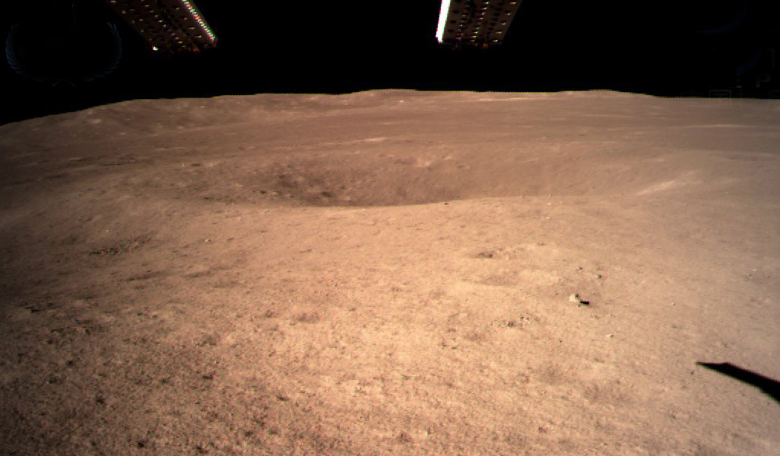A Chinese spacecraft has made the first-ever landing on the far side of the Moon in the latest achievement for the country’s growing space programme. The relatively unexplored lunar far side faces away from Earth and is therefore sometimes referred to as the ‘dark side' because so little is known about it.
A photo taken by the lunar explorer Chang’e 4 at 11.40 am China time (3.40 GMT) and published online by the official Xinhua News Agency shows a small crater and a barren surface that appears to be illuminated by a light from the probe.
The China National Space Administration (CNSA) landed its robotic probe Chang’e 4 in the unexplored South Pole-Aitken basin. It is thought to be the largest, oldest and deepest crater on the Moon’s surface.
Official confirmation of the landing came via state broadcaster CCTV which said the lunar explorer had touched down at 1026 (0226 GMT). The Communist party-owned Global Times also reported that the probe had “successfully made the first-ever soft landing” on the lunar far side.
Chang'e 4 is named after the Chinese goddess of the Moon and its mission is to take detailed measurements of the South Pole-Aitken basin, an impact site over 1,553 miles across that exposes the deepest parts of the lunar crust.
This enormous basin is the Moon’s oldest impact feature. It is also the deepest, with a rim-to-floor distance of almost eight miles (13 km), or more than six times as deep as the Grand Canyon.
It is believed to have formed in the Moon’s early history during a collision which likely threw up material from the interior, meaning that Chang’e 4 could provide new clues as to how the Moon came into being.
Launched on 7 December 2018, the Chang'e 4 spacecraft comprises both a lunar lander and a six-wheeled rover. Chang'e 4 first entered an elliptical lunar orbit on 12 December, drawing as close as nine miles (15 km) from the surface before its historic landing.
Spacecraft have taken pictures of the Moon's far side before but no lander has ever touched down there and the accomplishment marks a further step towards China's ambition to become a leading power in space exploration.
NASA administrator Jim Bridenstine described it as an “impressive accomplishment”, saying: "Congratulations to China's Chang'e-4 team for what appears to be a successful landing on the far side of the Moon - this is a first for humanity.”
The Moon is tidally locked to the Earth which means those of us bound to the planet can only ever view the familiar lunar ‘face’. And, despite pop culture references to the contrary, the far side isn't dark - it receives solar light when the Moon sits between Earth and the Sun.
To communicate with Chang'e 4 on the lunar surface, the Chinese space agency launched the Queqiao relay satellite which went into a ‘halo’ orbit over the far side of the Moon last May. The satellite allows the lander and rover to communicate via relay and send scientific data back to Earth.
Both the rover and the lander are equipped with a suite of instruments - including three cameras - that will allow Chinese space scientists to study in detail the geology of the area. The lander also carries seeds and silkworm eggs within a sealed container and will examine whether the two life forms can thrive in the hostile lunar environment.











